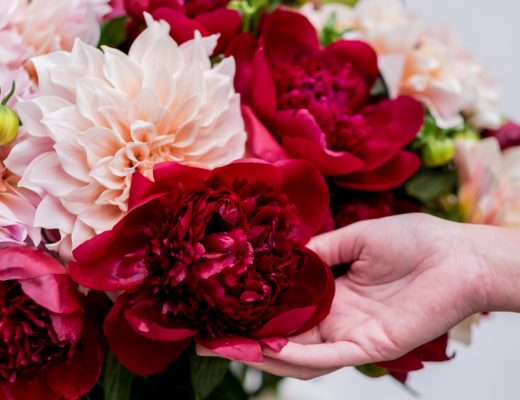There is no shortage of nature’s blooms; flowers can grow up to 1000 km from their farms to beaches or mountains and even reach Australia, where there are millions of them (or they came with us on ships that sailed across the Pacific Ocean). Flowers are the most precious thing to have and one of the rarest ones most people know. It means flowers are an opportunity to enhance the beauty of nature and make it a beautiful place for us to live in. Flowers give us incredible qualities that make us happy and bring us great joy and love for life. And the flowers do not only look amazing but also have a lot of health benefits when it comes to aging.
If you want to understand how flowers can help your skin and hair care and skin health, then read on to find out all about the top seven lessons of flowers that you need to learn before you hit 30. Read out the Top 7 Lessons About Flowers
1) A flower that lasts forever
For thousands of years since humans invented the value of flowers, they have been used as symbols of hope at weddings and celebrations around the area, so when We think about the fact that flowers have lasted this long, we feel like there must be something to say about it. The story isn’t as old as you might believe; plants have always been important in Hinduism and Buddhism. These religions both praise the flowers for their power and beauty and believe that if the flower blossoms on the outside, it is good luck. In Hinduism, flowers are said to purify people and cause us to see God, while in Buddhism, they are said to teach us right living, compassion, and wisdom, according to Wikipedia.
2) Flowers can act as an energy source
Many people argue that flowers can act as an energy source through scent and petals, but this couldn’t be further from the truth. The flowers are believed to have healing properties, which means that when we take a breath and smell the flower, or when we walk around the garden and gaze at the gorgeous blooming flowers, it feels like being able to breathe again. Suppose you want to get rid of your bad mood and negative emotions and try smelling the flowers. In that case, there aren’t any more reasons to put down your phone or stop looking forward to a nice meal (although the flowers provide that benefit), especially when it comes to maintaining a healthy balance of mind, body, and spirit.
3) A flower is a symbol of faith and peace
In ancient Rome, flowers were a popular feature among patrons and visitors during times of festivities, as the flowers were often seen as representing a sign of goodwill and prosperity. Nowadays, flowers represent many other things, which can mean many different meanings. Now get some nice set of flowers, buy flowers online, and find some nice sort of natural flowers. The American gallery of Natural History notes that there is actually a strong relationship between faith and floral displays, and flowers were often regarded as symbols of religious importance in Rome and Medieval times.
Flower shows, known as horticulture shows, were so popular that a fair-length photograph was needed to illustrate all that was happening. It was only possible to use flowers of various colors — red, pink, purple, and blue — because only those flowers could be reproduced. Those who went were called “Florists,” which suggests that many people did not feel comfortable using their own hands to cut these stems off their flowers, resulting in flowers with no actual plants inside them. People would remove their leaves and flowers for display rather than touching anything within the stems themselves, like leaves.
4) Flowers don’t just happen to be lovely flowers; they are part of nature’s work
Nature provides us with everything, and everything needs nature to provide, but that doesn’t mean that the Earth needs flowers to grow. Every flower requires water, some sunlight, air, humidity, nutrients — and yet, we are lucky enough to experience such in abundance. Whether your nose bleeds due to the lack of sunlight or rain does not fall on an entire day, it happens to the same extent. But flowers still need moisture to produce flowers, and that is why they need water from the Earth every time somebody takes a sniff of it, as nature wants to keep everything running smoothly throughout our whole ecosystem.
It is exactly why flowers need to receive water because the plants won’t grow without it. As mentioned earlier, only those flowers produced by water will survive, so flowers can’t simply decide to stand there like dumb bulbs and wait until springtime to bloom. That is why plants must receive water all the time, because, in springtime, the flowers open their seeds and sprout while the sun dares to shine upon the ground in summer. Water is essential to producing flowers, so let’s say the Earth decides to stop giving its oxygen and water to flowers; then, how could we expect roses? Or are we supposed to have roses?
5) Flowers are very much alike
All our eyes glance at the flowers and hear nothing but a distant siren, some angel singing, or someone whistling as they pass through the branches. But it’s not because trees block our ears, and we never actually hear their song; instead, we often overlook their beauty and fail to appreciate them. We don’t notice how pretty the flowers are. Plants are wonderful creatures that have been given us many gifts to enjoy for centuries. They provide food for animals to eat; they clean the Earth; they clean up after themselves or make medicines; they support pollination and even perform miracles. Most flowers can also sing our songs by putting up stems, or by wending their ways into nectar, or singing our stories by watering seeds. It is amazing, but it is also true that we don’t just admire flowers — we love flowers too.
6) Flowers are beautiful and useful
Not all flowers are beautiful and useful, but these two main categories deserve attention and care. Even though flowers are used to decorate temples in Japan, they are often just ignored in favor of colorful foliage, which can cause problems for animals and humans. Numerous studies show that yellow and orange foliage can make a terrible combination for bees, and it causes bees to die because of the pollen it attracts and the honey they need to keep alive. Other studies show that even greenery can kill bees when feeding on them, so a yellowish color can confuse them and hurt them greatly when it comes to getting to their hive.
7) Flowers are fun and easy to love
Although flowers aren’t a favorite subject matter of many people, they are quite cute. While you can get frustrated because they grow so fast and are hard to live through, sometimes, they look fantastic. When you come home after a night at the bar, your first sight has the feeling of seeing a flower burst into being because it finally looked cute when you saw them for the first time. It is so adorable and almost magical when you see flowers growing in a plant, but there are a few downsides:
-
Remember that flowers can get nasty. For example, suppose you turn on a plant containing flowers and snap photos. In that case, those snaps usually end up in online archives as they are being manipulated and made into memes to trick people into thinking flowers are harmless when that is far from the case when it comes to insects that feed on them.
-
When you take a picture of a flower and share it by Send flowers online, that is shared by numerous people, and it is not the photo itself rather the person that keeps uploading it. The images are taken from each flower, and they can be re-shared because it is nearly impossible to prevent anyone from taking them down.
-
When you see a photo of a flower, it tends to be a black-and-white picture, meaning that there is nothing else in the image.
Because of this, you cannot easily recognize what it is or how many flowers are in it.
Conclusion
Flowers play an important role in keeping our environment beautiful and fulfilling, but their significance goes beyond that. Their usefulness goes far beyond mere decoration; they can be utilized in our everyday lives. These facts are brought to light when we discover the importance of the flower. Don’t neglect to read each one.




